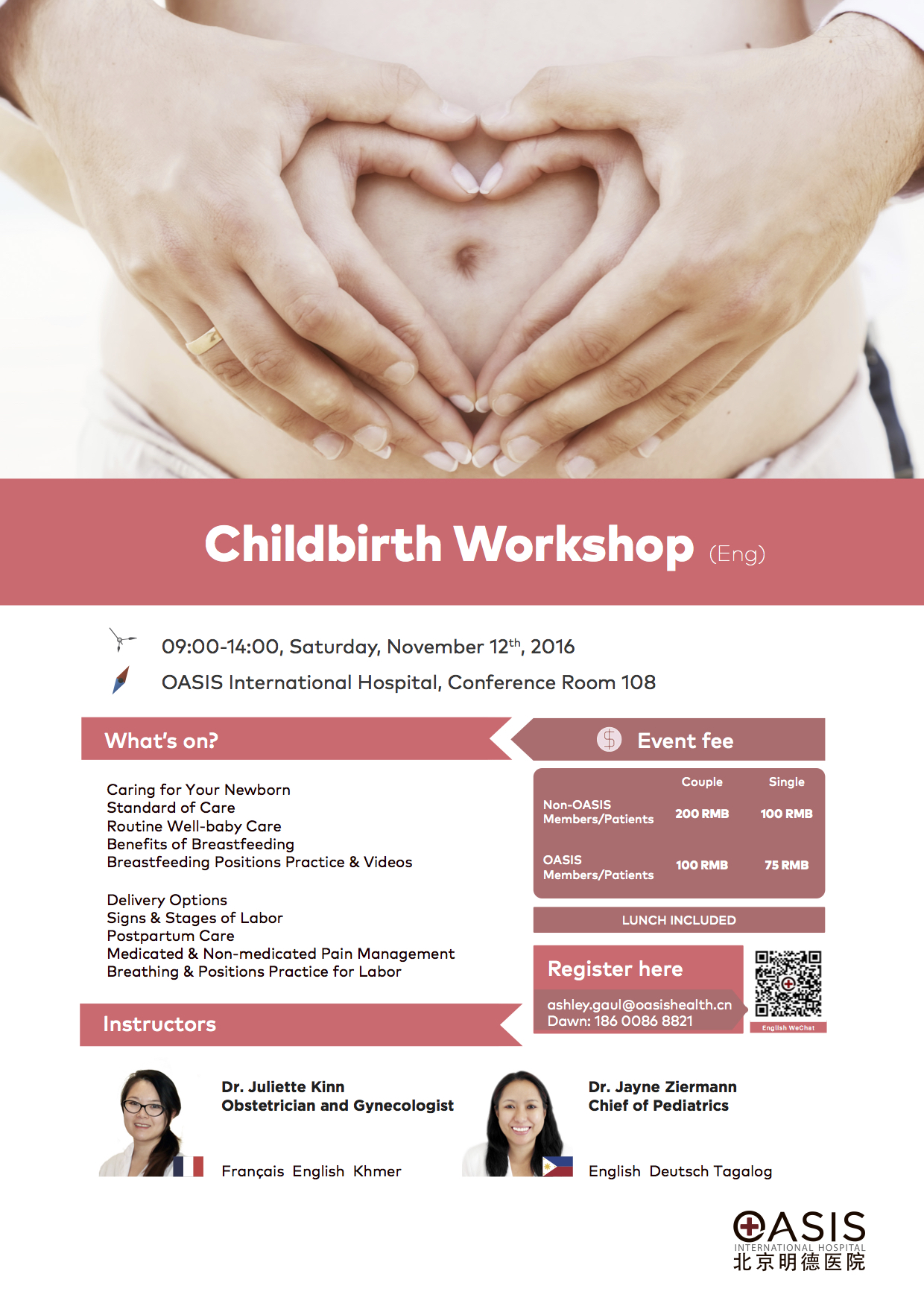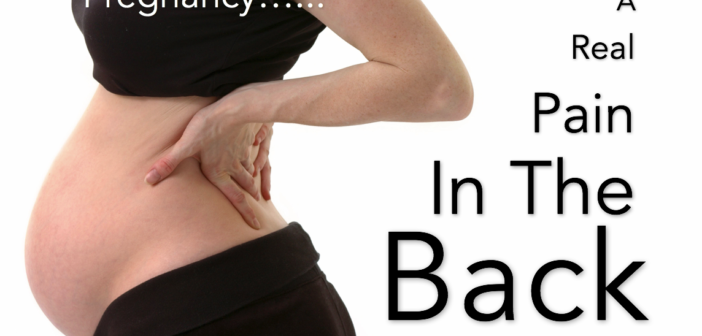Preparing for labor, discussing your birth plan and understanding all that is involved during labor can be stressful experience. You may have bought half a dozen birthing books to understand what to expect but still feel like you’re in the dark.
At OASIS, our aim is to give new parents the knowledge they need to be prepared, feel comfortable and enjoy their unique childbirth experience. Hospital events such as the OASIS Childbirth Workshop, Mother & Child Nutrition Workshop and more will give you a grounding in childbirth and newborn care as well as an opportunity to have your questions answered by professionals.

Let’s take a closer look at the types of pain relief options for mothers during labor and delivery that our Childbirth Workshop touches on:
Pain relief options breakdown in to two sections, pharmacological and non-pharmacological.
Non-pharmacological

- Psychoprophylaxis
In obstetrics, this is a method of metal and physical preparation for natural childbirth also known as the Lamaze method. This method of prepared childbirth is designed to help minimize the pain of childbirth, reducing the need for drugs or instruments, therefore carrying no risk to the mother and baby.
- Hydrotherapy
Hydrotherapy is basically any massage treatment using water. This is particularly effective during pregnancy because the body’s physiological response to water helps improve your circulation, ease your aching back feet, knees, as well as easing the pain of labor and delivery. So step into a warm tub or strong shower and let the power of water wash your pregnancy pains away.
- Breathing
During labor, your aim is to conserve energy for when you need it. Focused rhythmic breathing will help maximize the amount of oxygen available to you and your baby, as well as help you dealing with contractions. When you are tense or panicked, your breathing can become shallow and rapid, this cuts down on the oxygen your body needs to use for yourself and your baby during labor.
- TENS (Transcutaneous Electrical Nerve Stimulation)
TENS is a drug-free kind of pain relief often used in the early stages of labor. It is a machine that sends small, safe pulse of electrical current via leads to pads placed on your skin. You can control the current through a hand held controller, the current level can be maximized to help you through contractions.
Pharmacological

- Opiates
Opiates are a type of analgesic given to relieve pain. Opiates are given in small does and are usually administered at the early stages of labor in an attempt to avoid potential side effects for both the mother and baby.
Advantages:
Opiates offer pain relieve and do not interfere with a woman’s ability to push during labor. Opiates will not numb the pain, instead they reduce anxiety and improve the mother’s ability to cope with painful contractions.
Disadvantages:
Mothers can experience anything from nausea, vomiting, dizziness to hypoxia due to respiratory depression. As opiates can cross the placenta during labor your baby can also produce the following side effects: central nervous system depression, respiratory depression….
For these reasons, your baby might need other medication to counteract the effects of opiates. Naloxone is a medication given in small does intravenously to reverse respiratory depression that opiates can cause in babies.
- Laughing Gas (Nitrous Oxide)
Nitrous oxide is a clear, colorless gas that’s usually mixed 50/50 with oxygen for laboring moms. When breathed in, it leads to slight feelings of euphoria, relaxation and detachment from your current situation. In small doses — like what dentists use to help patients relax during a cavity filling — nitrous oxide is considered an analgesic, or pain relief. At much higher doses — sometimes used in operating rooms in combination with other drugs — the gas can be an anesthetic, meaning it leads to loss of consciousness.
Advantages:
According to practitioners, laughing gas helps women by easing pain and lessoning anxiety. If you choose to use laughing gas, you yourself are in control of when you inhale. Doctors would recommend you inhale gas 30secs before a contraction starts for maximum effectiveness.
Disadvantages:
Nitrous oxide is not adequate for second stage instrumental delivery, suturing of the perineum or manual removal of the placenta. Side effects of nitrous oxide can be lightheadedness and nausea.
- Epidural
Epidural anesthesia is a regional anesthesia that blocks pain in a particular region of the body. Epidurals block the nerve impulses from the lower spinal segments which results in decreased sensation in the lower half of the body.
Advantages:
Epidurals provide superior pain relief during labor and delivery. It decreases maternal hyperventilation and avoids opioid-induced maternal & neonatal respiratory depression. The effects of an epidural can be extended to match the duration of labor. For instances that require an episiotomy, forceps delivery or even an emergency C-section delivery, the epidural will provide analgesia and can be extended for the duration of the C-section.
Disadvantages:
Epidurals can cause a sudden drop in blood pressure, so your blood pressure will be routinely checked throughout to ensure adequate blood flow to your baby. You may experience a severe headache caused by leakage of spinal fluid. Less than one percent of women experience this side effect. Epidural has a failure rate of three percent. There also may be a risk of infection or paralysis.

If you are interested in coming to the next upcoming Childbirth Workshop on November 12th, email Ashley at: Ashley.Gaul@oasishealth.cn to register. In the meantime, check out our workshop flyer below.

This article is sponsored by OASIS International Hosptial.
Photos: Provided by OASIS




